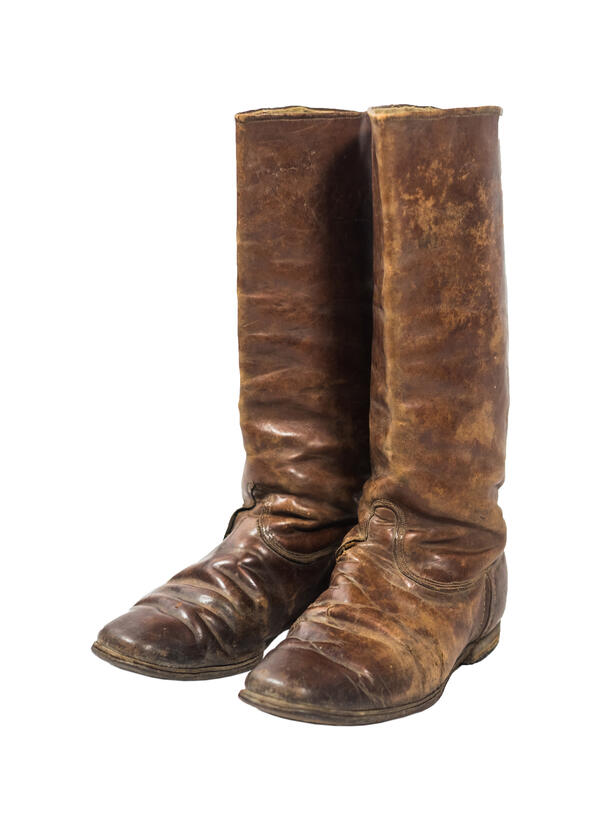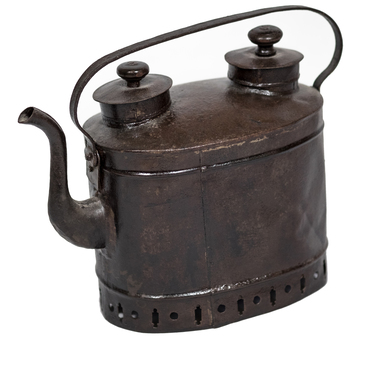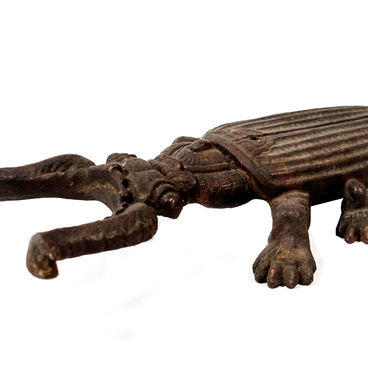This pair of men’s leather boots was manufactured at the Nevyansk plant in the early 20th century. The boots have high tops, a tarpaulin lining, and a small stacked heel. The leather sole is attached with two rows of wooden pegs.
Men's boots
Creation period
First third of the 20th century
Dimensions
10 cm × 37 cm × 27 cm
Technique
Machine sewing
Collection
6
Open in app#1
Men’s boots
#3
#11
The demand for footwear at the Nevyansk plant was always very high. Reportedly, the workers used to say: ‘Foundry work and bast shoes don’t go together.’ Indeed, unlike bast shoes—popular Russian footwear of the past centuries—boots could withstand high temperatures, which was very important when the worker was near the blast furnace melting the metal. And if the parents proudly said about their son that he had “put on his boots, ” it meant he was old enough to work at the plant.
#4
Shoemaker at work
#5
In the 18th and 19th centuries, the Nevyansk mining district was one of the largest centers of handicrafts in the Urals. Shoemaking was among the most popular ones. Nevyansk shoes accounted for almost 30 percent of the footwear of the entire YekaterinbUrg District. Those were mainly “peasants' shoes”: ankle boots, square toe boots, and various kinds of high boots. The general public could purchase such shoes. Well-off people wore welted boots, in which a belt, the so-called welt, was put on the insole to thicken the platform. The craftsmen used local leather as raw materials, and the best types of shoes were made of leather from the Saint Petersburg and Warsaw leather workshops. Ordinary people preferred boots lined with wooden pegs, as opposed to iron nails. The pegs were scalded in boiling water, covered with glue, and driven into the sole. A common shoe repair method was “stitching” whereby a new platform and heel were sewn to the old boot tops.
#6
Shoemaker’s tools
#7
Shoemakers worked in separate workshops. There were benches and tables for workers near the windows, and shelves for storing tools were arranged in the walls. Shoemakers sold their products to the local market and nearby factories. The most famous person engaged in the shoemaking trade was Mark Meredin, a peasant by birth from the Byngovskiy plant, who had a lot of property in Nevyansk. He owned a tannery and shoemaker’s workshop and engaged in flour and grain trade.
#12
State Autonomous Cultural Institution of the Sverdlovsk Region "Nevyansk State Historical and Architectural Museum"
read morehide
00:00
00:00
1x
Men's boots
Creation period
First third of the 20th century
Dimensions
10 cm × 37 cm × 27 cm
Technique
Machine sewing
Collection
6
Open in app
Share






